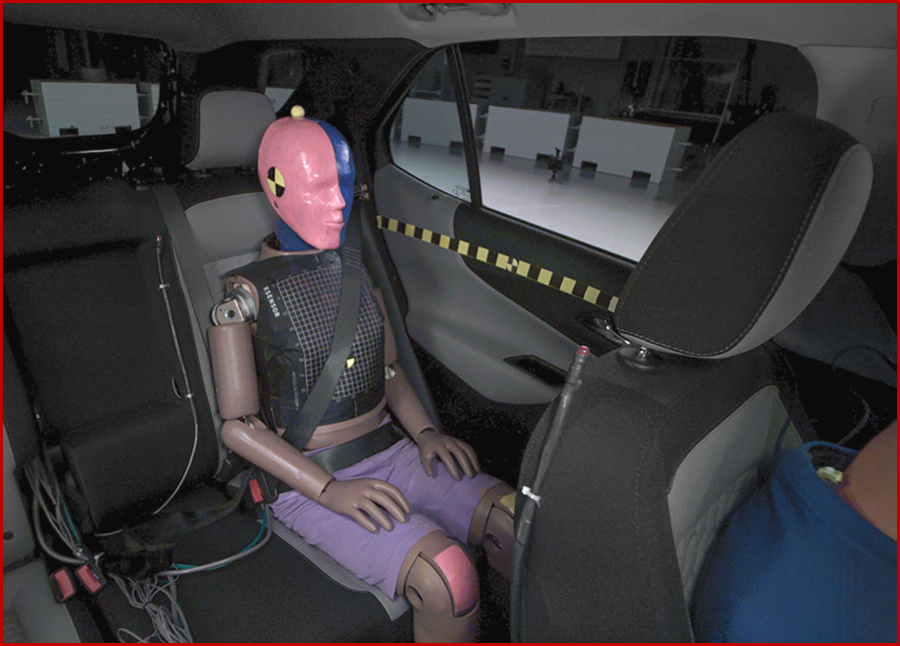Click for more information.
IIHS updated the moderate overlap front test in 2022 after research showed that in newer vehicles the risk of a fatal injury is now higher for belted occupants in the second row than for those in front. “This is not because the second row has become less safe. Rather, the front seat has become safer because of improved airbags and advanced seat belts that are rarely available in the back. Even with these developments, the back seat remains the safest place for children, who can be injured by an inflating front airbag, and the rating does not apply to children secured properly in child safety seats,” IIHS said.
In the updated test, a dummy the size of a small woman or 12-year-old child is positioned in the second row behind the driver dummy. For a vehicle to earn a good rating, there can’t be an excessive risk of injury to the chest, among other body regions, as recorded by the second-row dummy.
The changes were made because for the initial year of testing, IIHS engineers estimated the risk of chest injuries with a device that records the seat belt tension and the dummy’s own chest deflection sensor, which measures how much the rib cage is compressed by the force of the crash.
To avoid delaying the launch of the program, IIHS employees simply used a pressure mat to track the position of the shoulder belt and penalized vehicles when it exceeded a maximum height. Vehicles with shoulder belts higher than the cutoff could receive no better than a marginal rating for chest injury risk, regardless how little chest deflection the dummy’s internal sensor recorded.
The new “chest index” considers both chest deflection and belt position, using a formula that the Institute says it has been validating for the past year to adjust the deflection metric based on distance of the shoulder belt from the internal sensor.
However, the pressure mat is still used to determine the maximum shoulder belt position during the crash. Engineers now evaluate maximum belt position separately as part of their assessment of how well the restraints control the motion of the dummy during the test, which reduces the influence of shoulder belt height on the overall rating. In addition, the cutoff for a belt that is too high has been raised by 10 millimeters in recognition of the need for shoulder belts to accommodate occupants of various sizes. These changes were not part of the original phase-in plan.
“The belt tension metric, which makes it very difficult for a vehicle without technology like pretensioners and belt force limiters to earn a good rating, remains unchanged,” IIHS said.


